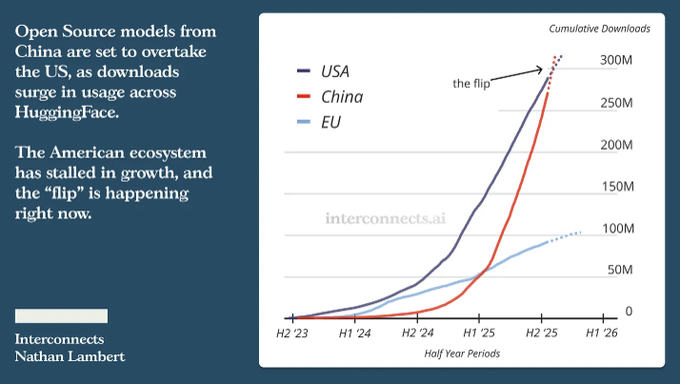~by Sean Paul Kelley
When supposedly well-educated people abuse history, analogize incorrectly, or make ridiculous comparisons for political gain I lose all semblance of mindfulness, which results in a complete takeover of monkey-mind (a Zen Buddhist term for losing your shit). For example, a few days ago I watched this video of US Air Force Brigadier General Douglas Wickert asserting that China is preparing for a Pearl Harbor style-attack. After calming down, rewatching the video and reading the transcript in an attempt to confirm the Air Force general made such an ill-informed assertion it became clear he did not make the assertion explicitly, but implied it in multiple ways at multiple times. He also cited Army Air Force General Billy Mitchell, the father of the strategic bombing doctrine America so loves, several times. I’ll explain why citing Billy Mitchell is both correct and important, but indicative of a dangerously unimaginative strategic mindset. But first let’s discuss the You Tube video’s click-bait title “U.S. General Warns: China Prepping for ‘Pearl Harbor-style’ surprise attack.”
I don’t know about this. I’m ambivalent here.
Why?
Well, I’m unable to decide if this is just lazy, racist thinking, or plain old-fashioned historical ignorance, willful or otherwise. But I can state, without an iota of ambiguity that China, in its six thousand year history, has absolutely no history of conducting surprise attacks on non-combatant sovereignties.
Zero.
Even at the dawn of Chinese history there is no mention of surprise attacks against states one is at peace with. Not in Sima Qian’s ‘Records of the Grand Historian’, who is China’s version of Herodotus, nor in the Art of War, by Sun-Tzu, which is without question the greatest book on strategy ever written. Sun-Tzu was a Chinese general living during the Warring States Period. His realism and understanding of human nature reminds me a great deal of the Athenian general and author Thucydides, but I digress.
The assertion that China is preparing a sneak attack is so utterly ignorant of East-Asian history it’s embarrassing to read. And the parallels Gen. Wickert tries to make are like a thirsty man reaching down from the rim of the Grand Canyon to get water from the Colorado River: delusional. But, it’s also unsurprising.
Why?
Because what Gen. Wickert embodies is another in a long list of American generals competent in both tactics and the operational art of war—which includes exceptional prowess in utilizing America’s unparalleled logistical expertise—but a insipid and unimaginative general who has zero concept of strategy, historical, grand and/or otherwise.
Need another more obvious example?
Okey-dokey. Here’s a blast from the past: US Army Gen. Tommy “Catastrophic Success” Franks.
Here’s where the abuse of history gets worse and kind of sways me towards thinking this is kind of an unacknowledged form of racist thinking regarding East-Asians. I mean, seriously, aren’t they all clothes washers, little and yellow, and all look the same, right? Obviosuly East-Asian diversity is immense. If you’ve lived in Asia and traveled in several of the nations and are observant one can recognize by sight alone the facial incongruities between Japanese, Chinese, Koreans, Vietnamese, etc. But I again, digress.
Taking a Neo-racist interpretation further and adding a dollop of historical ignorance, let’s discuss Japan’s long history with surprise attacks. Anyone who has read Japanese and Russian history on even a basic level is aware of Japan’s most famous sneak attack: the Battle of Port Arthur.
Wait, what? You’ve never heard of it?
In short, the Battle of Port Arthur was a surprise night attack by the Japanese on the then neutral Russian fleet moored in the harbor at Port Arthur, Manchuria in 1904. So now you know.
But let’s push our historical horizon a bit further, shall we?
People who say “no one could anticipate Pearl Harbor” are fucking idiots. Japan proved at Port Arthur how far it was wiling to go to hobble an adversary it was at peace with. One could argue that Pearl Harbor was a clear failure of American strategic imagination. One could also argue that perhaps it was exactly what the historically well-informed president at the time was expecting when he ended the sale of oil to Japan, thus provoking an attack by Japan that would a.) hobble the US fleet and make the capture of the oilfields in the Dutch East-Indies easy and b.) force US entry into the war. That’s a debate honest people can have.
But arguing that China’s going to do it?
GTFO!
Now when it comes to 9/11—another great failure of the American strategic imagination—all the morons who said, “no one could ever have imagined such a thing” are fools. No less than seven years before author Tom Clancy sketched out a similar scene in his novel “Debt of Honor” in which a disgruntled Japanese jumbo-jet pilot crashes his jet into the US Capitol Building during a State of the Union address. Clearly imaginable. Clearly conceivable. Clancy was even interviewed many times after 9/11 about it. But those interviews disappeared down the memory hole.
Digressing. Digressing. Digressing. I know. My bad.
I’m going to state it again, unequivocally: China, i.e. the Han Chinese people, have no tradition of surprise attacks on non-combatant nations or polities they are at peace with. Of all the history I have read regarding the Chinese they have almost always approached jus ad bellum with honor. Jus ad bellum is a fancy smancy-pants way of discussing the laws a state or sovereignty must obey before engaging in war and sneak attacks are not only a huge no-no, but dishonorable as all get out.
Now let’s discuss suprise attacks in the context of jus in bello, meaning the conduct of war once declared, or how one acts during hostilities. Like how reprisals are allowed so long as they are proportionate, one principle the US has pretty much violated in every war since WWI. As for the element of surprise, or sneak attack? For fucks sake, that’s got to be obvious; everyone hopes and aims and seeks it and it is a totally legitimate aim to seek such an advantage. Take good ole Cherry Tree toppling General George Washington at the Battle of Trenton. His surprise attack across the Delaware River against the Hessians was a complete success and altered the course of the war. It also demonstrated Washington’s increasingly excellent grasp of strategy and its influence on morale. The Battle of Trenton galvanized his troops, and earned an enormous amount of loyalty, loyalty he truly needed after a long and mostly demoralizing year of campaigning. There is only polity I’m aware that has practiced sneak-attacks, jus ad belllum, on nations with which they were at peace: Japan. There may be others. If so, enlighten me. Sincerely.
To repeat, ad naseum, China has fuck-all history of acting this way. Zhuge Liang would rise from his grave and smite any Chinese leader who acted so dishonorably. Perhaps Gen. Wickert confuses China’s long history of attack through indirection, jus in bello, with sneak attacks, jus ad bellum, which would indicate he’s a pretty dim bulb.
Now, Wickert’s mentioning Army Air Force General Billy Mitchell’s prediction that the US and Japan would go to war was correct. It’s inarguable. But it’s Mitchell’s role as the father of the idea of strategic bombing that is problematic. The idea, refined, means a war can be won by air power alone. Only one war has ever been won by air power alone, the bombing campaign against Serbia to partition Kosovo. This air campaign was waged by Gen. Wesley Clark. The Serbs endured weeks of bombing and only relented when the US threatened to use ground troops. So, in a technical kind of way, it wasn’t won by air power alone. I’m already at a thousand words, so I’m not going to go into why such a strategy alone can’t win a war. The idea is problematic, nay, deleterious to US strategic thinking, inspiring ideas like missile defense and the like, which dumb down strategic thinking faculties in US generals, Air Force, Navy and Army alike.
The enduring use of the apocryphal story about the time the Soviet Premier asked the US President for permission to nuke China is another piece of history abused so frequently for so many different purposes I’m surprised no one has written a book debunking it. Historian Sarah Paine relays this Cold War anecdote for propagandistic purposes against contemporary Russia in this video. I didn’t go full monkey-mind listening to her, but I could not help but comment why this anecdote gained currency and how. I noted,
“The story that the Soviets asked the USA if they could nuke China is a fable. It is pure balderdash and a piece of Cold War myth that has metamorphosed into having some aspect of historicity and it does not. It never happened. Never. It was a lie whispered to certain sections of the US public to be spread in preparation for the opening to China that Nixon performed in 1972.”
I didn’t get this straight from the horse’s mouth, but I got it from a flag officer who got it from Henry Kissinger himself and I am fully convinced of my long-since passed friend’s veracity. Besides, Sarah Paine is wrong about everything she says in just about everyone of her lectures. Why people listen to her is simple: she reinforces their preconceptions, offering no challenge or opening for revision. The worst kind of historian in my opinion.
Finally, there is this video interview of ‘historian’ Sam Biagetti by Katie Halper.Starting around minute 5:37 Mr. Biagetti states that he doesn’t really believe there was ever anything like a unipolar moment. He then adds that people “assume” hegemony is the norm historically. He adds, “when it is not the norm,” and further indicates his ignorance by implying multi-polarity is the natural order of interstate relations. My head near exploded. I proceeded to write in the comments a brief history of hegemony/empire versus multipolarity, beginning with the Greek city states prior to the Persian wars and up to the end of the Peloponnesian as the first multi-polar system, that was followed by a long period of empire. In hindsight, I imagine there was a sort of multi-polarity in Mesopotamia in the 6th millenium BC but I can’t get it all right all the time. I’m not immune to forgetting. Anyway, this is the gist of my comment on his ignorance of ancient, medieval and modern history, including the post-Cold War era:
Sam B. is super misinformed and/or flat out wrong. The historical norm is empire, or hegemony. Mulitpolarity is actually very rare. Here are the only historical examples of mulitpolarity: Greece pre-Peloponnesian war, roughly 650 BC through the end of the Peloponnesian War in 404 BC. Soon thereafter Alexander conquered most of the known world and the classical Hellenistic world settled into empire and/or a handful of hegemonic powers. Likewise in East Asia, along the Yellow River basin in modern China, the Warring States period lasted from 475 BC – 221BC when Qin Shi Huang Di conquered all the warring states and united all of China. China has been a multi-ethnic empire to this day, ruled by rising and falling dynasties. As Luo Guanzhong wrote in his first sentence of China’s most famous novel: “”The empire, long divided, must unite; long united, must divide. Thus it has ever been” (話說天下大勢.分久必合,合久必分),” a statement that remains true to this day, even though the dynasty ruling now calls itself Communists.
There was a brief period in India of multipolarity, round about the time the Buddhist and Jain reforms of Hinduism gained traction. There was a handful of independent states along the Ganges River that warred against each other and made alliances when interests aligned.
Back in the West Rome’s rise acccelerated rapidly after winning the Second Punic War in 201 BC conquering the entire Mediterranean Basin by 14 AD, the basin remained uni-polar for a thousand years. After the fall of the Western half of the empire, conquerers ruled most of Europe, Charlemagne created the great Frankish empire. More unipolarity. The Eastern half of the Roman Empire, ruled from modern day Istanbul, lasted until 1453.
Renaissance Italy was a congeries of independent powers practicing a sort of balance of power multipolarity until France was invited into their politics and invaded. Empire reigned supreme in Europe for another two centuries. It was only until the peace of Westphalia in 1648 that the modern concepts of the soveriegn state, and the principle of non-interference in a sovereignty’s internal politics was forbidden, were codified by the international treaties signed in 1648. This concept spread throughout the world in the 19th century by the few states that could resist European colonization, such as Siam, Ethiopia (for a time), China and Japan and then grew exponentially during the decolonization era of the 1950-60s. But the successor states of the great Littoral empires of the UK, France, Dutch, Spanish, and Portuguese united in alliance under the auspices of a new hegemon after the second war of European suicide known as WWII: the United States, a hybrid-republican empire. It had one peer at the end of WWII: the USSR. But the USSR collapsed under the weight of mismanagement and stagnation of the 70s and recevied its death blow with Chernobyl. Had there been no Chernobyl glasnost and perestroika might have worked.
But by 1992 the US had no peer competitor, until the elite of the nation traded the foundation of its power, industry, to China for individual fortunes. It is unfortunate your interlocutor Sam B. is incapable of understanding post-Cold War history. Quite fascinating really. One wonders what subject of history he focused on, because geopolitics, war, empire, and the like are clearly not his strong suits.
Obviously my comment is a gross oversimplification, but necessary nonetheless. Miss Paine, Gen. Wickert and Mr. Biagetti are three easily found and disproven examples of the kind of a-historicity degrading political discourse in America.
As an historian myself, I am of course biased. So what? That doesn’t mean I’m wrong about this.
But how are we to learn to think with a national historical sensibility when the teachers of history in junior and high school double as the football and/or basketball coaches? You get what you pay for, and we aint getting nothing but shit. Our uniquely American scatalogical ignorance of history is dangerous, leads to easy political manipulation of an ignorant electorate and contributes to the rise of neo-quasi-racist belief system now taking over our public discourse.
These videos provide ample proof.

 This is, again, because Chinese models are at least 90% cheaper to run, and mostly open source. Only a complete and utter moron would run their business using proprietary models where OpenAI or Anthropic can jack up the price any time they want or depreciate the model you actually needed. Even US startups agree, 70 to 80% of them are using Chinese open models.
This is, again, because Chinese models are at least 90% cheaper to run, and mostly open source. Only a complete and utter moron would run their business using proprietary models where OpenAI or Anthropic can jack up the price any time they want or depreciate the model you actually needed. Even US startups agree, 70 to 80% of them are using Chinese open models. These numbers are astounding:
These numbers are astounding:

